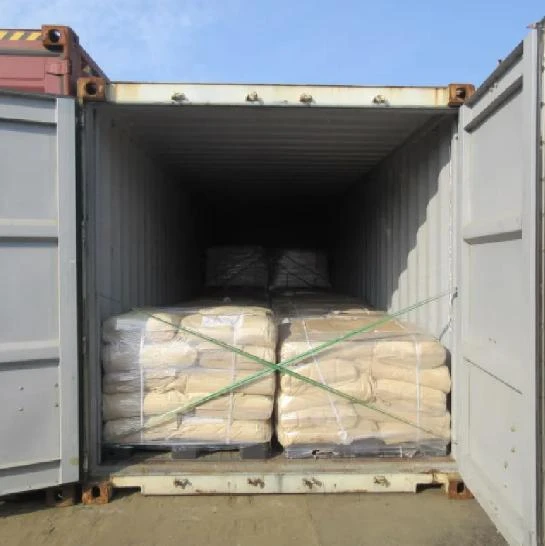
bread preservatives
The Role of Preservatives in Bread Ensuring Freshness and Safety
Bread is a staple food in many cultures around the world, appreciated for its versatility, taste, and nutritional value. However, one of the significant challenges faced by both manufacturers and consumers is the preservation of bread. This is where bread preservatives come into play. These substances help extend the shelf life of bread, maintain its quality, and ensure safety for consumption.
Understanding Bread Spoilage
Bread is prone to spoilage due to its moisture content, which creates an ideal environment for mold growth. Mold can develop quickly on bread, particularly when it is exposed to warm, humid conditions. Additionally, staling—an irreversible process affecting the texture and flavor of bread—occurs even in the absence of mold. Staling is caused by the crystallization of starch molecules, which leads to a dry and hard texture. To combat these issues, preservatives are often incorporated into bread formulations.
Types of Bread Preservatives
There are several types of preservatives used in bread, and they can be categorized as either natural or synthetic.
1. Natural Preservatives These include ingredients derived from natural sources, such as vinegar, honey, and lemon juice. For instance, vinegar is effective in inhibiting mold growth while also contributing to the dough's fermentation process. Natural preservatives are increasingly preferred by health-conscious consumers who seek cleaner labels with fewer artificial additives.
2. Synthetic Preservatives Common synthetic preservatives include calcium propionate, potassium sorbate, and sodium benzoate. Calcium propionate is one of the most widely used preservatives in commercial bread production, as it effectively helps prevent mold without significantly altering flavor or texture. These chemical preservatives are favored for their potency and ability to enhance the shelf life of products significantly.
bread preservatives

Health Concerns and Regulatory Standards
The use of preservatives in bread has raised health concerns among consumers, leading to a demand for transparency in food labeling. While most preservatives are considered safe at regulated levels, some consumers prefer to minimize their intake of synthetic additives. Regulatory bodies, such as the FDA and EFSA, have set strict safety standards regarding the use of these preservatives in food production, ensuring they remain within safe limits.
In response to consumer preferences, many manufacturers now offer preservative-free or clean label bread options. These products typically have shorter shelf lives but are marketed as healthier alternatives to conventional bread.
The Future of Bread Preservation
The future of bread preservation is likely to see a blend of traditional methods and innovative technologies. Researchers are exploring natural alternatives to synthetic preservatives, such as the use of essential oils, which possess antimicrobial properties. Likewise, advances in packaging technology—such as modified atmosphere packaging—can significantly prolong bread freshness by limiting exposure to oxygen and moisture.
Moreover, there is a growing interest in biopreservation, which utilizes natural or controlled microbiota to improve food safety and shelf life. This approach not only extends the freshness of bread but also enhances its nutritional profile by incorporating beneficial microorganisms.
Conclusion
Bread preservatives play a vital role in ensuring the safety and longevity of one of the world’s most beloved foods. As consumers become more health-conscious and seek cleaner labels, the food industry must adapt by exploring both natural and innovative preservation techniques. The goal remains the same to provide delicious, fresh bread that aligns with modern dietary preferences, while still being safe and appealing. As we move forward, the balance between preservation, safety, and health will continue to shape the future of bread production.
-
The Safety Challenges of Ammonium Nitrate FertilizerNewsJun.26,2025
-
The Critical Role of Mining ChemicalsNewsJun.26,2025
-
Shelf Life of Glacial Acetic Acid Food GradeNewsJun.26,2025
-
Enhancing PVC Longevity with 1,2,3-Benzotriazole InnovationsNewsJun.26,2025
-
China’s Dominance in Food Additive ProductionNewsJun.26,2025
-
Can Aluminum Hydroxide Replace More Toxic Alternatives?NewsJun.26,2025
-
PE and PP Plastics with Benzotriazole AdditivesNewsJun.12,2025
Hebei Tenger Chemical Technology Co., Ltd. focuses on the chemical industry and is committed to the export service of chemical raw materials.
-

view more DiethanolisopropanolamineIn the ever-growing field of chemical solutions, diethanolisopropanolamine (DEIPA) stands out as a versatile and important compound. Due to its unique chemical structure and properties, DEIPA is of interest to various industries including construction, personal care, and agriculture. -

view more TriisopropanolamineTriisopropanolamine (TIPA) alkanol amine substance, is a kind of alcohol amine compound with amino and alcohol hydroxyl, and because of its molecules contains both amino and hydroxyl. -

view more Tetramethyl Thiuram DisulfideTetramethyl thiuram disulfide, also known as TMTD, is a white to light-yellow powder with a distinct sulfur-like odor. It is soluble in organic solvents such as benzene, acetone, and ethyl acetate, making it highly versatile for use in different formulations. TMTD is known for its excellent vulcanization acceleration properties, which makes it a key ingredient in the production of rubber products. Additionally, it acts as an effective fungicide and bactericide, making it valuable in agricultural applications. Its high purity and stability ensure consistent performance, making it a preferred choice for manufacturers across various industries.











